1. Deep-Sea Dragonfish

YouTube
The Deep-Sea Dragonfish (Stomiidae) is a ferocious predator with a fearsome set of teeth and a glowing barbel under its chin to lure prey. Found at depths of up to 6,000 feet, it has a sleek, elongated body adapted for ambushing small fish and crustaceans. Its ability to produce bioluminescent light also helps it communicate and hunt in the pitch-black waters. Dragonfish have an unusual adaptation: specialized eyes that allow them to detect red and infrared light, giving them an edge over other deep-sea predators.
2. Sea Pig
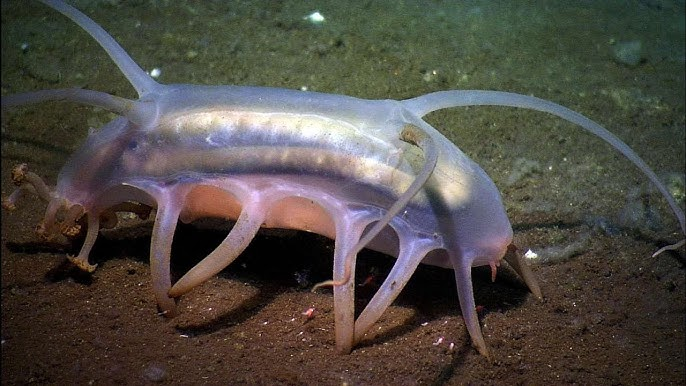
YouTube
The Sea Pig (Scotoplanes globosa) is a soft-bodied sea cucumber found on the abyssal plains of the Indian Ocean, living at depths of over 3 miles. These odd, pinkish creatures scuttle along the seabed using their tube-like legs, feeding on organic material in the sediment. Their translucent skin allows scientists to observe their internal organs, making them favorites in deep-sea research. Sea pigs are often found in clusters, working as a group to sift through the ocean floor. Despite their unassuming appearance, they play a crucial role in recycling nutrients in their habitat.
3. Giant Isopod
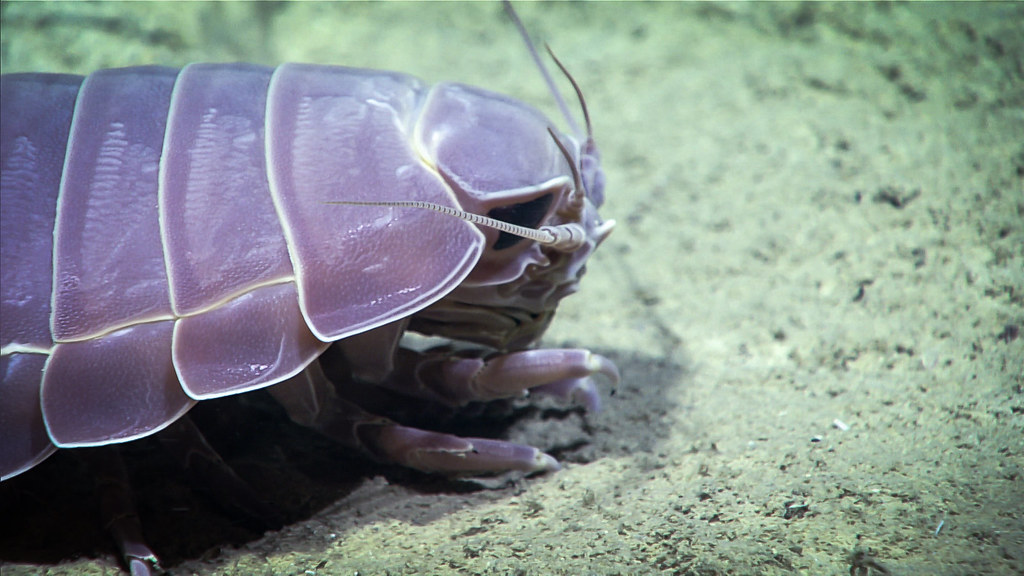
Flickr
Looking like something straight out of a sci-fi movie, the Giant Isopod (Bathynomus giganteus) is essentially an oversized, deep-sea cousin of the common pill bug. Measuring up to 20 inches long, these crustaceans live on the ocean floor, scavenging dead animals or feeding on slow-moving prey. Their tough, armored exoskeleton helps them withstand deep-sea pressure, while their large compound eyes allow them to detect movement in the dark. Often referred to as “vacuum cleaners of the sea,” they play a critical role in the ecosystem by cleaning up organic debris.
4. Frilled Shark
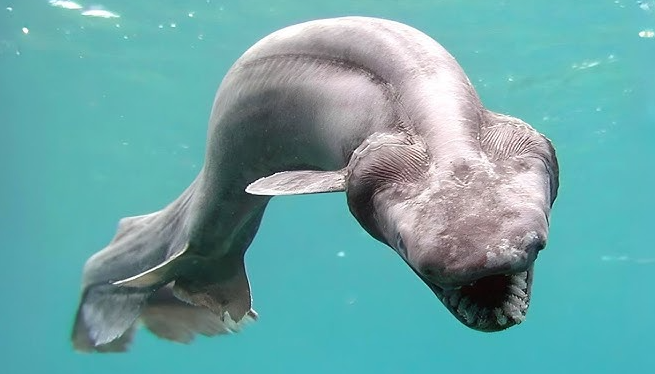
YouTube
The Frilled Shark (Chlamydoselachus anguineus) is a prehistoric-looking species that resembles an eel more than a typical shark. Found at depths of up to 5,000 feet, it has a long, serpentine body and frilly gill slits that give it its name. This slow-moving predator is armed with over 300 needle-like teeth arranged in multiple rows, perfect for gripping slippery prey like squid. Often called a “living fossil,” the Frilled Shark’s primitive design has remained largely unchanged for millions of years. Its rare appearances at the ocean’s surface continue to intrigue and frighten observers.
5. Barreleye Fish
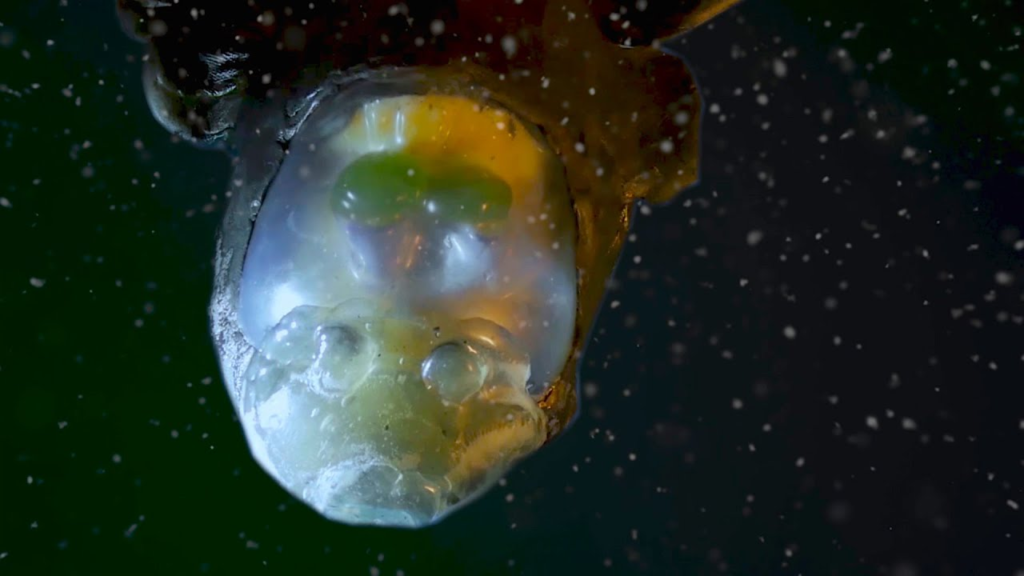
YouTube
The Barreleye Fish (Macropinna microstoma) is famous for its transparent head and upward-facing tubular eyes. Found at depths of 2,000–2,600 feet, this fascinating creature uses its unique anatomy to spot prey above while staying hidden from predators below. The transparent dome over its eyes allows it to gather light in the pitch-dark waters. It often hovers near siphonophores, jellyfish-like creatures, carefully stealing their captured prey without getting stung. This fish’s bizarre appearance and specialized vision are perfect adaptations for life in the deep sea.
6. Gulper Eel
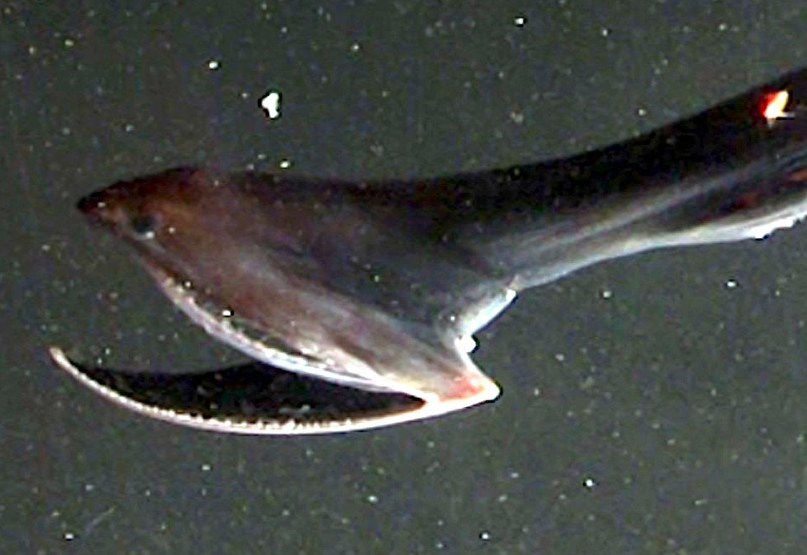
YouTube
The Gulper Eel (Eurypharynx pelecanoides) is a creature of extremes, with a massive, expandable jaw that allows it to swallow prey much larger than itself. Its long, snake-like body can grow up to six feet, but its defining feature is its enormous mouth, which resembles a pelican’s pouch. Found at depths of 3,000–6,000 feet, the gulper eel’s bioluminescent tail is thought to attract prey. Despite its intimidating look, it mostly feeds on small crustaceans and fish. Its ability to store large meals in one gulp ensures survival in a world where food is scarce.
7.Vampire Squid
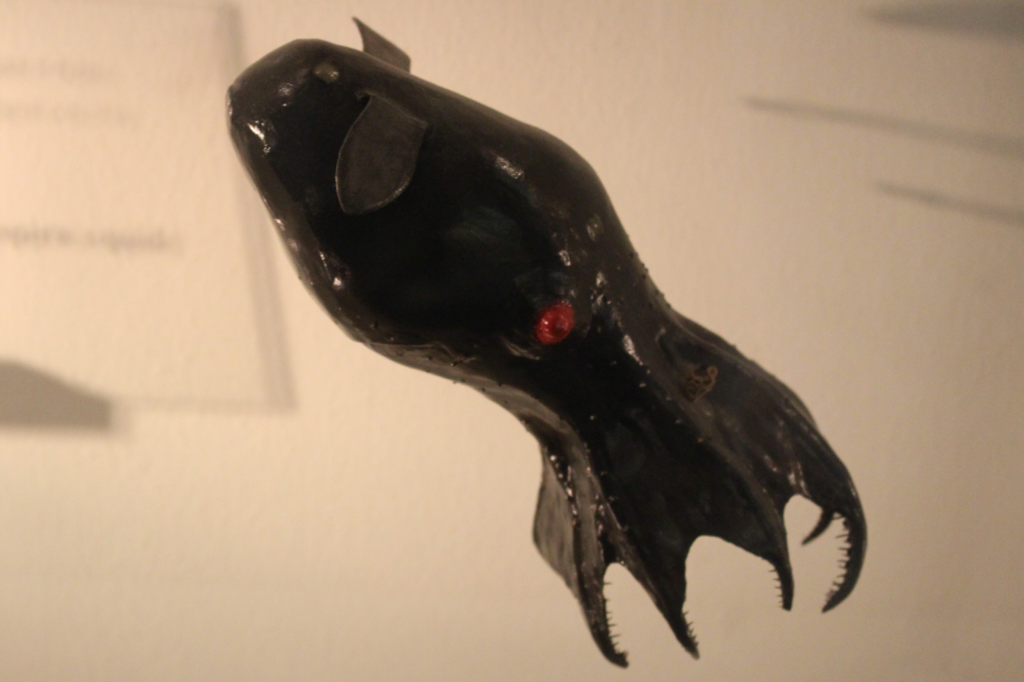
Wikimedia Commons
Despite its spooky name, the Vampire Squid (Vampyroteuthis infernalis) is a harmless scavenger of the deep. Found at depths of 2,000–3,000 feet, it has a dark, gelatinous body and glowing, bioluminescent eyes. Instead of preying on others, it feeds on marine snow—organic debris that drifts down from the ocean’s upper layers. When threatened, it turns itself inside out, flashing its light-producing photophores and showing its spiky-looking arms to startle predators. Its ability to survive in low-oxygen environments makes it a marvel of evolution, earning it the nickname “living fossil” due to its ancient lineage.
8. Goblin Shark
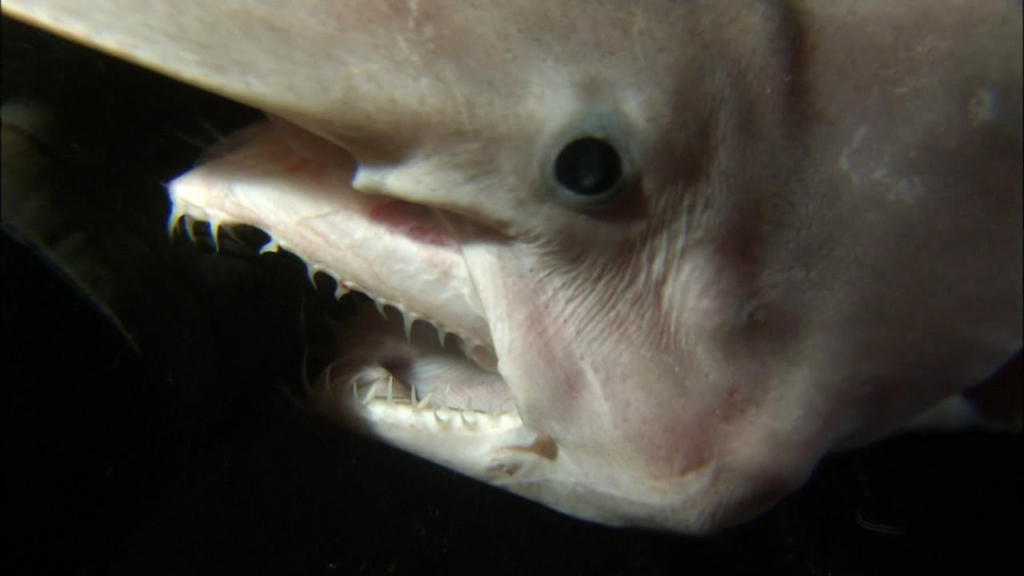
YouTube
The Goblin Shark (Mitsukurina owstoni) is a terrifying yet fascinating predator. Found at depths of up to 4,000 feet, it has a long, protruding snout and extendable jaws filled with razor-sharp teeth. When prey comes near, its jaw shoots forward like a slingshot to capture it. Its pinkish hue comes from visible blood vessels under its semi-transparent skin. Known as a “living fossil,” the Goblin Shark has remained relatively unchanged for 125 million years, making it a window into Earth’s prehistoric oceans. Despite its intimidating look, it’s rarely encountered and poorly understood.
9. Hydrothermal Vent Worms
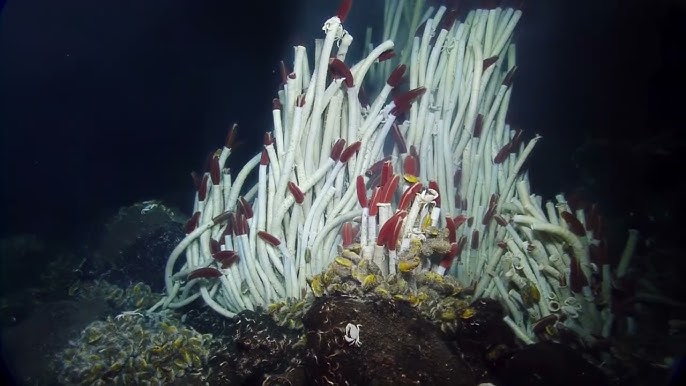
YouTube
The Giant Tube Worm (Riftia pachyptila) thrives near hydrothermal vents in the Indian Ocean, where temperatures and pressure are extreme. These creatures lack a mouth or digestive system, instead relying on symbiotic bacteria in their bodies to convert vent chemicals into nutrients. Growing up to eight feet long, they cluster around vents in vibrant colonies, creating an otherworldly spectacle. Their red plume-like appendages are packed with hemoglobin, which helps them absorb chemicals from the water. These worms are a cornerstone of deep-sea ecosystems, supporting a host of other species that live near the vents.
10. Comb Jellies

YouTube
Comb Jellies, or ctenophores, are gelatinous creatures that glide through the ocean using rows of cilia that refract light, creating a rainbow effect. Found in both shallow and deep waters, they are carnivorous, using sticky cells instead of stinging tentacles to catch prey. Unlike true jellyfish, comb jellies lack venom. In the deep sea, their bioluminescence helps them attract food and deter predators. Their delicate beauty and remarkable efficiency as predators make them one of the ocean’s most fascinating creatures.
11. Anglerfish

YouTube
The Anglerfish, particularly the females, are famous for their glowing lure, which dangles from a rod-like appendage on their heads. Found at depths of 2,000–3,000 feet, this bioluminescent beacon attracts prey in the dark. Anglerfish have large mouths filled with sharp teeth, allowing them to consume prey nearly half their size. Males are significantly smaller and often fuse to the females’ bodies, becoming parasites for reproduction. This extreme form of adaptation highlights the challenges of deep-sea survival and the ingenuity of evolution.
12. Dumbo Octopus
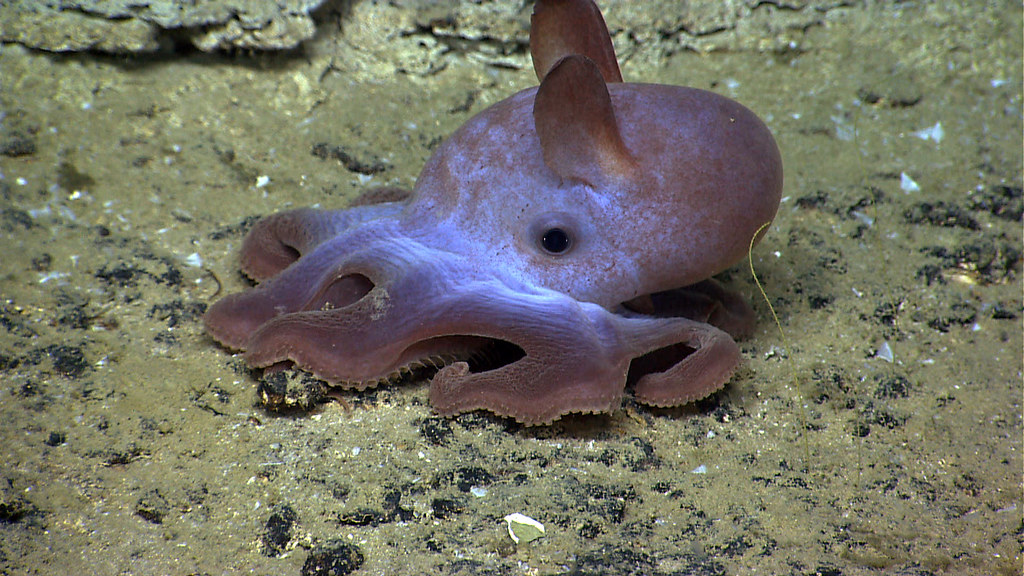
Flickr
The Dumbo Octopus (genus Grimpoteuthis) is one of the most adorable denizens of the deep sea, named for its ear-like fins that resemble Disney’s Dumbo. These creatures live at extreme depths of up to 13,000 feet, where sunlight never penetrates. They use their fins to “flap” gracefully through the water, looking more like floating cartoons than real animals. Unlike most octopuses, they don’t have ink sacs, as there’s little need for defense mechanisms in such a sparsely populated environment. They feed on small crustaceans and worms, swallowing prey whole. Scientists are fascinated by their calm, almost serene demeanor in the ocean’s darkest corners.


